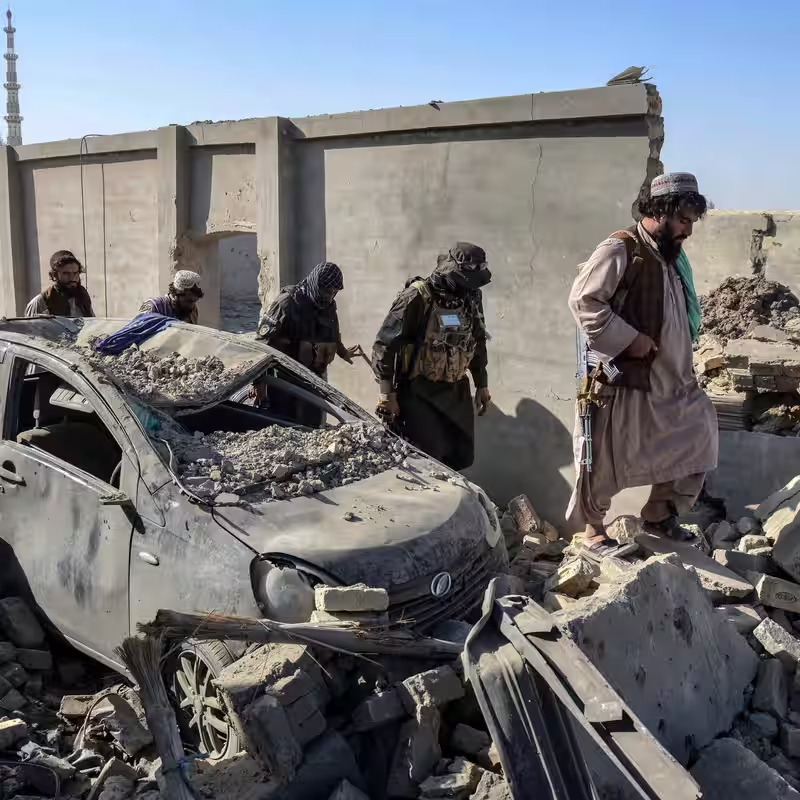A fragile truce has taken hold along the volatile Afghanistan-Pakistan border, offering a temporary reprieve from the worst outbreak of cross-border violence in years. But experts warn that without addressing the deep-rooted tensions, this ceasefire may be nothing more than a brief intermission in a long-running conflict.
Table of Contents
- The Ceasefire Deal: What Was Agreed?
- Why Now? The Trigger for Talks
- The Underlying Causes That Remain
- The Role of Regional Mediators
- What’s Next for the Region?
- Sources
The Ceasefire Deal: What Was Agreed?
On October 19, 2025, Afghanistan and Pakistan confirmed they had agreed to an immediate and mutual ceasefire. The agreement, brokered by Türkiye and Qatar, mandates that all attacks from Afghan soil into Pakistan must cease instantly. Pakistani Defense Minister Khawaja Asif stated that the deal ensures attacks on Pakistani territory “will stop immediately” . Both nations have also committed to establishing formal mechanisms to prevent future escalations .
Why Now? The Trigger for Talks
The ceasefire follows more than a week of intense and deadly fighting along their shared 2,600-kilometer border, known as the Durand Line—a boundary that Afghanistan has never officially recognized. This recent flare-up was the most severe in years, causing significant casualties and displacement on both sides, and pushing the two nuclear-armed neighbors to the brink . The urgency of the situation created a narrow window for diplomacy, which regional powers were quick to exploit.
The Underlying Causes That Remain
While the guns have fallen silent for now, the core issues fueling the conflict are far from resolved. The primary point of contention is the status of the Durand Line. Pakistan views it as an international border, while successive Afghan governments, including the current Taliban administration, have rejected it as a colonial imposition.
Furthermore, both nations accuse each other of harboring militant groups that launch cross-border attacks:
- Pakistan accuses Afghanistan of providing safe haven to the Tehreek-e-Taliban Pakistan (TTP), a group responsible for numerous attacks within Pakistan.
- Afghanistan accuses Pakistan of supporting the Islamic State Khorasan Province (IS-K) and other anti-Taliban factions.
Analysts universally agree that until these fundamental security and territorial disputes are addressed, any ceasefire is inherently unstable .
The Role of Regional Mediators
The successful negotiation of this truce highlights the growing diplomatic influence of Türkiye and Qatar in South Asian affairs. Both nations have maintained communication channels with the Taliban government in Kabul and have strong ties with Islamabad. Their joint mediation was crucial in bringing the two hostile parties to the table and securing a commitment to de-escalate . This development could signal a new era of regional conflict resolution, where external powers play a pivotal role in maintaining stability.
What’s Next for the Region?
The immediate future hinges on the implementation of the agreed-upon mechanisms. Will both sides honor their commitments? Can a joint monitoring body be established to investigate ceasefire violations? The coming weeks will be a critical test of the parties’ sincerity.
For the millions of civilians living in the border regions, this ceasefire offers a desperately needed chance to rebuild and recover. However, the shadow of past broken truces looms large, and a lasting peace will require far more than just a temporary halt to hostilities—it will demand difficult compromises and a genuine willingness to engage in sustained dialogue.




